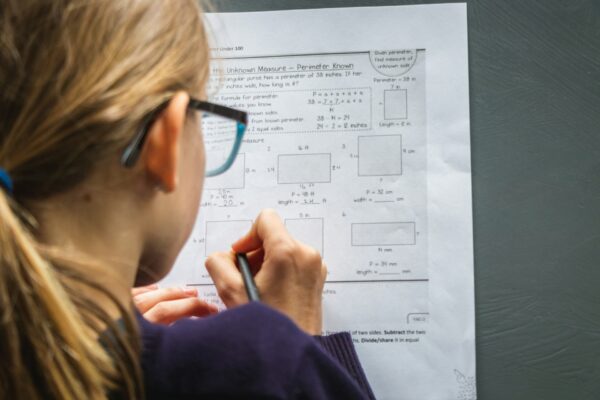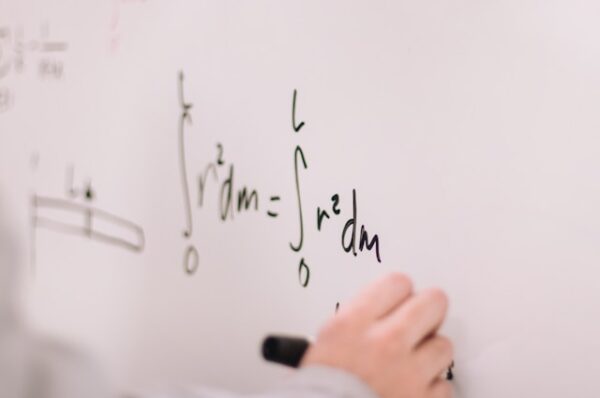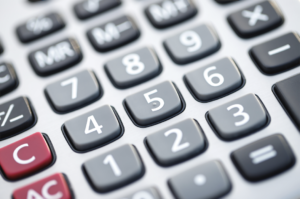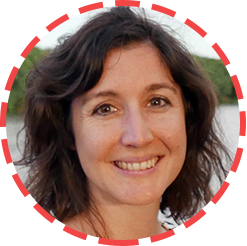The International Baccalaureate is known for its rigour and comprehensive approach to education. When it comes to IB Maths, it is no different.
Many mistakenly think that Mathematics is only about memorising formulas and crunching numbers. But the Diploma Programme has a different approach. Yes, you will surely encounter many formulas and Maths problems, but you also learn to think critically and gain a deep appreciation for mathematical expression.
But what else to expect from the course? In this guide, we’ll delve into the heart of IB Mathematics, exploring its content, assessment structure, as well as unique challenges it presents. We will also provide effective learning strategies necessary to excel in this demanding programme.
What it IB Maths
The International Baccalaureate Diploma Programme offers six subject groups. Mathematics belongs to Group Five, and it is a mandatory subject to study. Luckily, you can choose between two Maths options based on your interest as well as future academic and career goals. These options are Analysis and Approaches (AA) and Applications and Interpretation (AI), both available at SL and HL.
- Analysis and Approaches emphasizes theoretical mathematics and places a strong focus on problem-solving and analytical skills. If you plan to pursue university studies in science, engineering, economics, or mathematics itself, this course is an excellent choice.
- Applications and Interpretation is about applying mathematics to solve real-world problems. It provides students with data analysis skills, the ability to interpret mathematical models, and the confidence to solve Maths problems in various contexts. It is a better option if you’re interested in social sciences, business, technology, and other disciplines that heavily utilize data analysis.
Who Should Study IB Maths and Why?
The IBDP requires every student to study Mathematics, whether Analysis and Approaches or Applications and Interpretation. However, you shouldn’t view Maths as simply a mandatory subject. Rather, it is a course that gives valuable skills and opens vast future opportunities.
If you’re among those who excel in exact sciences and enjoy a challenge, you will find IB Maths both stimulating and rewarding. The programme is ideal if you want to deepen your mathematical knowledge and explore concepts in greater detail.
At the same time, IB Maths goes beyond numbers and computations. Instead, it fosters critical thinking skills, which are valuable across various aspects of life. Through problem-solving exercises, you’ll learn to approach challenges strategically and develop a more logical thought process.
But these are far from being the only skills the Maths course can improve. You can rely on it to cultivate logical reasoning and data analysis as well. You will benefit from them not only in your future academic journey but also in everyday life, from making informed decisions to effectively analysing information.
Speaking about future education, if you plan to pursue university studies or a career in Science, Technology, Engineering, or Mathematics (STEM) fields, you simply cannot do without Maths.
You may be wondering why you should choose IB Maths rather than a different qualification. The answer is that IB Maths may give you a competitive edge when applying to prestigious universities. Studies have shown that students with IB Maths are more likely to gain admission to top universities for STEM fields. The IB’s rigorous curriculum will allow you to build a strong mathematical foundation needed for success in these demanding disciplines.
Finally, a solid background in Mathematics can open doors to a wide range of future careers in fields including finance, economics, engineering, and many others.
Is IB Maths Hard?
The IB Diploma Programme itself is known for its academic rigour, and Maths is no exception. In 2023, the average score in Maths – 4.0 – fell below the IB programme average of 4.6, and the same trend has persisted over the previous years. These numbers show that Maths is indeed one of the toughest subjects to excel in.
But there is more to it. Compared to other subjects, achieving a perfect 7 in IB Maths is no mean feat. In 2023, only 7.3% of graduates scored a 7, compared to the overall average of 8.9% across all subjects.
The difficulty also depends on a specific Maths option you study. Applications and Interpretations is statistically more challenging, with a lower average grade (4.2 for HL and 3.7 for SL) and fewer students achieving a top score (3.7% for HL and 3.1% for SL). On the other hand, Analysis and Approaches appears to be more manageable, with a higher average score (5.1 and 3.8 for HL and SL respectively) and a higher percentage of students scoring a 7 (21.4% for HL and 6.3% for SL).
All in all, IB Maths can be a demanding subject, but the level of difficulty varies depending on the specific course. Don’t be discouraged by the challenge – we have tips for you on how to get a 7 in IB Maths.
IB Maths Analysis and Approaches (AA): Syllabus and Course Features
The AA syllabus covers 5 broad topics related to theoretical Mathematics. You should expect 150 teaching hours at SL and 240 HL. Here is the breakdown with details on what you will study at SL and HL.
1. Number and Algebra
This section lays the foundation for your mathematical journey. You’ll explore scientific notation, sequences and series (including formulas for terms and sums), Binominal Theorem, exponents and logarithms (including solving exponential equations), as well as proofs (using deductive reasoning and notation).
In addition to the same material, Maths AA HL introduces counting principles (combinations and permutations), complex numbers (including their forms and operations), complex roots of polynomial equations, as well as systems of equations.
Overall, Number and Algebra spans 19 hours for SL and 39 for HL.
2. Functions
With this topic, you’ll delve into the concept of functions, including their domain, range, and graph. You’ll learn function notation, explore inverse functions, and discover different function types (like linear, quadratic, and exponential).
Apart from that, the part of the course is dedicated to graph analyses. You’ll learn how to draw them from given information, identify key features, and use technology to manipulate them with transformations (such as translations, reflections, and stretches).
What’s more, you will be able to sharpen your problem-solving skills. This section covers solving equations (both graphically and analytically) and inequalities. You’ll also learn how to apply your graphing skills and equation-solving knowledge to real-world situations.
HL students get extra material with polynomial functions. They explore their properties, graphs, and how to solve polynomial equations.
At SL, the Functions section takes 21 teaching hours, while at HL – 32.
3. Geometry and Trigonometry
This section starts with an introduction to 3D space and covers distance & midpoint calculations, volume & surface area of basic solids, and angles between lines/planes.
The Trigonometry section introduces sine, cosine, and tangent, and how to use them to solve problems in right-angled and non-right-angled triangles. You’ll also explore triangle applications and delve into the concept of radians for measuring angles. In addition to this, the section covers trigonometric identities (like the Pythagorean identity) and reciprocal trigonometric functions.
HL expands Tragicomic knowledge with such topics as vector concepts (magnitude, direction, operations) as well as multiple vectors and their applications (including kinematics). It also delves into equations for lines and planes in 2D & 3D space.
The total number of teaching hours at SL is 18, while at HL – 46.
4. Statistics
This section is about data analyses. You’ll learn about populations and samples and how to present data effectively (using histograms as well as box and whisker plots). Apart from that, you’ll explore measures of central tendency (mean, median, mode) and dispersion (range, interquartile range, standard deviation).
Probability is another topic studied in this section. In particular, you’ll get to know probability concepts (like events, outcomes, and sample spaces), how to calculate probabilities of events (including combined and conditional events), and explore Bayes’ theorem for solving more complex probability problems.
On top of that, Statistics introduces the concept of random variables and their probability distributions. For instance, you’ll learn about expected value, variance, and standard deviation for both discrete and continuous random variables. In addition, you’ll get to explore the normal distribution as well as learn about the relationship between two variables.
Beyond this, HL students study the use of Bayer’s theorem for a maximum of three events, as well as delve deeper into random variables.
The syllabus envisions 27 hours for the Statistics topics at SL and 32 at HL.
5. Calculus
This section starts with the concept of limits and how they relate to continuity and differentiability of functions. You’ll develop an understanding of derivatives (finding the rate of change of a function) and explore basic differentiation rules for various functions.
Along with that, you’ll learn how to analyse the behaviour of functions using derivatives and explore applications such as finding equations of tangents and normals to a curve at a given point.
The section continues with derivatives. In particular, it explores higher derivatives and how they relate to the shape of a function. You’ll also get to know implicit differentiation (useful for equations where variables aren’t isolated) and how to solve basic differential equations.
Finally, Calculus introduces the concept of integration and teaches how to find the antiderivative of various functions and explore definite integrals.
In addition to the above, HL studies 8 more topics, including continuity and differentiability of a function at a point, evaluation of limits, implicit differentiation, integration by substitution, Maclaurin series, and others.
It takes 28 hours to cover SL content and 55 hours for Calculus topics at HL.
IB Maths Applications and Interpretation (AI): Programme and Course Specifics
While both IB Maths Applications and Interpretation and Analysis and Approaches cover five main topics, AI takes a unique approach. Specifically, it focuses on how Maths is used and interpreted in real-world situations. The number of teaching hours is the same as with AA – 150 for SL and 240 for HL.
1. Number and Algebra
The first section introduces various types of numbers and their behaviour in sequences and series. Specifically, you’ll learn about Arithmetic sequences, Geometric Sequences, Laws of Exponents, Logarithms, as well as their applications in various sectors (such as finances).
It also deals with rounding and Approximation – how to estimate, round numbers effectively, and deal with errors that arise from rounding.
Finally, a great portion of Section 1 is dedicated to Technology usage. You’ll learn how to use calculators and other technological tools to solve complex equations, systems of equations, and even financial problems such as amortization.
The Maths AI HL curriculum offers an extended exploration of complex Numbers, laws of logarithms, Matrices, and their applications.
The number of teaching hours for the Number and Algebra section is 16 at SL and 29 at HL.
2. Functions
The second section in IB Maths AI, Functions, gives knowledge and skills to represent and analyse real-world relationships. It provides 31 hours worth of content for AI SL and 42 hours for AI HL.
This section starts with the basics – a straight line. You’ll explore different ways to represent a line’s equation, including understanding its slopes, intercepts, and interactions of lines with each other.
Further, it continues with the concept of a function as a mathematical model that describes a relationship between an input and an output. At the same time, you’ll get to know how to create a visual representation of a function’s equation. This includes sketching graphs from given information and transferring them from a calculator screen to paper.
When it comes to application, IB Maths AI introduces various function types that represent different scenarios. For example, linear models come in handy for situations with constant change, like population growth at a steady rate, while Quadratic models help analyse situations with an initial increase or decrease followed by a change in direction.
In addition, this section gives an idea of exponential growth and decay, direct and inverse variation, as well as other functions depending on the exponent.
HL students delve deeper into functions and explore their various types (such as composite functions), transformations of graphs, as well factors that can alter graph behaviour (i.g. stretching, reflecting, or shifting a function). Besides, they explore exponential models to calculate half-life and logarithmic models to analyse relationships that grow or decay at a constantly changing rate.
3. Geometry and Trigonometry
The third section of IB Maths AI, Geometry and Trigonometry, is about shapes, angles, and spatial relationships. Standard Level dedicates 18 hours to this topic, while Higher Level has a deeper exploration within 46 hours.
For starters, this section teaches high school students to calculate the distance between two points in this space, as well as find the midpoint of a line segment. You’ll also explore the concept of volume and surface area for various 3D solids, like pyramids, cones, spheres, and shape combinations.
Then, the section progresses to trigonometry and its application to solve problems involving right-angled and non-right-angled triangles. In addition, you’ll learn how to do calculations related to a circle such as the length of an arc and the area of a sector.
HL students, among other things, explore the concept of radians, an alternative way to measure angles, and how to convert between degrees and radians. HL also introduces the Pythagorean identity, the concept of transformations, vectors (including vector applications in kinematics), along with graph theory.
4. Statistics and Probability
Within 36 or 52 hours (for SL and HL respectively), IB Maths AI provides statistical and probability tools to analyse data. You’ll learn to distinguish between populations and samples, discrete and continuous data, as well as identify outliers and avoid sampling bias.
The section also covers frequency distributions, histograms, measures of central tendency (mean, median, mode), and measures of dispersion. In addition, you will learn to visualise these features with box and whisker diagrams.
A large portion of this section is dedicated to relationships between variables. You’ll get to know correlation, i.e. a link between variables, and scatter diagrams as a way to represent these relationships. HL students will also learn regression to estimate trends and even make predictions.
The second half of the section, Probability, explains the likelihood of events. You’ll calculate probabilities and use tools like Venn diagrams and tree diagrams to visualise probabilities of combined events. While Maths AI SL students focus on the normal distribution (a bell-shaped curve), HL explores additional distributions like binomial and Poisson. In addition, it dives into statistical hypothesis testing. You’ll get to know concepts such as p-values, chi-square, and t-tests.
5. Calculus
Section 5 of IB Maths is all about how things change and evolve. Within 19 hours, if you’re at SL, or 41 hours if you’re at HL, you will learn about limits, derivatives, integration, and other concepts.
The last section of the syllabus begins with limits, a concept that explores how functions behave as their inputs get closer to specific values. The next step is derivatives, which measure functions’ instantaneous rate of change. You’ll get to know the derivatives of various functions as well as learn to analyse their behaviour.
As the section progresses, you will be introduced to integration and use it to calculate accumulated quantities. While both SL and HL explore this concept, HL takes a closer look with material covering optimisation problems and motion analysis.
In addition to the above, HL, explores the derivatives of trigonometric functions, exponential functions, and logarithmic functions. Advanced differentiation techniques including the chain rule, product rule, and quotient rule are also studied at this level.
As always, AI goes beyond bare theory. You will learn how to apply calculus to solve real-world problems (rates of change, motion problems, etc.).
Which IB Maths Course Should I Choose?
Picking an IB Maths course is a tough decision since it will impact whether you will be struggling for two years or enjoying your journey. As always, the choice depends on your natural abilities and the goals you wish to achieve.
AA – For Those Who Love Maths
AA studies the theoretical side of Maths. When picking this course, you’ll learn advanced mathematical concepts and get to know the reasoning behind equations. If you’re good with numbers and abstract thinking, AA might be your perfect match.
Students tend to do better in Analysis and Approaches compared with Applications and Interpretation (the average score for HL is 5.1 in 2023), and an impressive 21.4% of graduates received the sought-after 7. So, if you prefer a solid chance to show off a good grade in your diploma, AA might be a more preferred option.
Besides, it provides a strong foundation in algebra and is a starting point for careers in the STEM field, engineering, and economy.
Overall, AA is for you if:
- You’re good at understanding abstract and complex concepts (complex numbers, vectors, etc.) and solving Calculus problems;
- You have strong higher-order thinking or you’d like to improve it;
- You’re strong in calculations.
AI – For Those Who’d Like to Apply Maths in the Real World
Applications and Interpretation is all about using Maths in everyday situations. In particular, the course will teach you how to solve real-world problems using your Maths skills. You’ll learn how to analyse data, build models, as well as see how Maths plays a role in the world around us.
So, if you’re more hands-on and like seeing how Maths works in practice, AI might be a better choice for you. Besides, it may be more beneficial if you see yourself in such fields as social and natural sciences, statistics, medicine, business, and design.
The average score for the AA course is 4.2 at HL, which attests to its complex nature. Universities worldwide will appreciate that you’re not scared of challenges. Plus, the strong practical Maths skills you’ll receive are useful in many jobs.
Summing up, AI is a better choice if:
- You’d like to know more about such topics as Matrices, Algorithms, statistical distribution, etc.;
- You want to find out how to apply mathematical knowledge to solve real-world problems;
- You enjoy such topics as statistics, probability, game theory, and others.
Ultimately, the choice of the course depends on you. Think about what you’re good at and what you want to do in the future. If Maths isn’t your strongest subject but you’re drawn to subjects like economy or applied sciences, AI might be a better fit. But if you’re a Maths whiz who wants to explore the theoretical side or become a mathematician altogether, AA is the way to go.
What Level of Maths Should I Choose in the IB Programme?
Now that you know more about IB Maths courses, you still need to decide one more thing: which level to choose. Whether it will be SL or HL hinges on your academic goals and aspirations.
SL provides a strong base in core mathematical concepts over 150 hours of teaching time. It covers fundamentals like algebra and calculus, along with essential principles. This level is great for students interested in Maths but not pursuing heavily math-focused university fields. In a sense, SL is a broad introduction providing a good understanding of the subject.
HL, on the other hand, is known for a deeper exploration of advanced mathematical concepts. Some of these concepts you will learn in a greater detail as your SL peers, and some are unique for HL. These include permutations and combinations, complex numbers, proofing, reciprocal trigonometric ratios, laws of logarithms, and many others.
Overall, you will spend 90 hours more (240 hours in total) at HL than at SL. The greater depth is also reflected in the exam format – HL students complete 3 Papers instead of 2.
Higher Level is ideal if you have a strong passion for numbers or are planning university studies heavily reliant on mathematics.
IB Maths Assessment System and Examination
IB Maths assessment system comprehensively evaluates your mathematical understanding and application skills. The system awards grades on a scale of 1 to 7, with 7 being the highest possible achievement. Your final grade is a combination of scores from external exams and internal assessments.
External Exams
External exams, marked by independent examiners, constitute 80% of your overall grade. They consist of written papers that challenge you to showcase your knowledge and problem-solving abilities.
Papers 1 & 2 are two compulsory assessments that are common to both Analysis and Applications and Applications and Interpretations. However, there is a difference in how they are conducted.
Paper 1
- Paper 1 for AA is a non-calculator exam that focuses on your reasoning and problem-solving skills. It consists of two parts: short-response questions covering a broad range of topics from the syllabus and a compulsory extended-response question.
- Paper 1 for AI, in contrast, is a series of short-response questions – you may answer them using a calculator. This paper often tests your ability to use statistical techniques and modelling to solve real-world problems. You may expect to analyse data sets, provide predictions, and interpret results.
Regardless of the IB Maths option, this stage of the assessment lasts 1,5 hours at SL, with a possible gain of 40% of the final grade, and 2 hours at HL – all the right answers will bring you 30% of the total grade.
Paper 2
- Paper 2 for AA is a calculator exam, which assesses your ability to analyse and solve problems using technology. It includes a mix of question formats (short-answer and extended-response questions), requiring you to demonstrate a deeper understanding of mathematical concepts. It typically includes questions on functions, calculus, statistics, and data analysis.
- For AI Paper 2 does not allow the use of calculators. It includes problem-solving questions that test your ability to use Maths concepts in practical situations, justify your reasoning, and communicate mathematically.
Therefore,Paper 2 makes the same contribution to your final grade as Paper 1 – 40% at SL (exam duration 1.5 hours) and 30% at HL (exam duration 2 hours).
Paper 3
HL students are exclusively intended to work 3. It allows you to showcase your extended-response problem-solving capabilities through two in-depth questions requiring a calculator. The exam spanning 1 hour awards 20% of the overall score at HL.
Want your exams to go off without a hitch? Make sure to read our 3 Principles of success in IB Maths exams.
Internal Assessment
20% of your final grade constitutes The IB Maths Internal Assessment, an independent investigation allowing you to showcase your research, analytical, and communication skills within the frames of mathematics.
Internal Assessment involves selecting a mathematical topic that interests you. This could be anything from the applications of calculus in physics or fractals in nature. Once you’ve chosen your topic, you need to conduct your investigation, gather evidence, and provide a written report.
Overall, Internal Assessment helps deepen your knowledge of the relevant mathematical concepts and explore their applications in various contexts.
How to Study IB Maths?
IB Maths is a challenging discipline and studying can sometimes feel like climbing a mountain. The curriculum demands a combination of conceptual understanding, problem-solving skills, and consistent practice. However, with the right mindset and effective study techniques, you can excel in this rigorous program. Here are some essential steps towards mastering IB Maths.
Decide on a Direction and Explore the Curriculum
The first step is to decide which IB Maths option best aligns with your goals and interests: Analysis and Approaches or Applications and Interpretation.
AA focuses more on pure mathematics and is suitable for further studies in the fields of engineering, physical sciences, and mathematics. Conversely, AI with its emphasis on statistics, modelling, and applied mathematics is a great option for social sciences, natural sciences, and business.
Once you’ve chosen your direction, thoroughly explore the curriculum for that option. Understand the topics, depth of knowledge required, and any areas of particular interest or challenge. This initial groundwork is necessary to build your study plan.
Practice Constantly
Consistent practice is the cornerstone of success in IB Maths. It reinforces your understanding of concepts and sharpens your problem-solving abilities. What’s even more, practice can introduce you to the types of questions you’ll encounter in exams. In a way, it may even boost your confidence and reduce anxiety.
To practice effectively, start by working through practice questions and exercises from your textbooks as well as online resources such as question banks or interactive learning platforms. As you progress, you can incorporate past exam papers to experience the actual exam format and level of difficulty. But don’t just practice questions; review your work, identify mistakes, and understand where you went wrong. This self-assessment will solidify your learning and prevent you from repeating the same errors.
One more excellent way to practice is by working through problems with peers or joining study groups. Collaborative learning encourages knowledge sharing, exposes you to diverse problem-solving approaches, and provides opportunities for constructive feedback.
Start Tutoring Sessions with a Tutor
Sometimes, even the most dedicated efforts are not enough. You may feel like you fall further and further behind, and the gap in your knowledge becomes wider no matter how hard you try. If this is something that is happening to you, don’t wait till the point of no return. Seeking guidance from an experienced tutor can be a game-changer in your IB Maths journey.
A tutor can provide personalised attention, namely identify your strengths and weaknesses, and tailor their teaching approach accordingly. Moreover, they may offer alternative explanations and strategies to help you grasp complex concepts more effectively.
TutorsPlus is here to connect with highly qualified and reputable IB Maths tutors. We carefully vet and match students with tutors who specialise in the specific Maths curriculum to ensure you receive top-notch support.
Use a Variety of Study Materials and Resources
Learning IB Maths effectively means regularly exposing yourself to diverse study materials and resources. Your textbooks are great but relying solely on them may limit your understanding. Instead, you should try to incorporate additional materials into your learning process to broaden your perspective and improve problem-solving skills.
So, in addition to your textbook, you can explore IB Maths books by different publishers, online video lessons, and interactive websites that offer alternative explanations and examples. These varied resources can clarify difficult concepts from different angles and better cater to your learning style.
You can also join online forums, discussion groups, or study communities. Engaging with fellow Maths students and experts allows you to ask questions, clarify doubts, and gain new perspectives on challenging topics.
Be Persistent and Consistent
During your two-year journey, there might be moments of frustration and setbacks. However, don’t let them discourage you. IB Maths isn’t always a challenge, it is also an opportunity for growth. But to actually grow as a mathematician, you need to be patient and consistent.
It all starts with developing a study routine and sticking to it. Set achievable goals and celebrate your progress, no matter how small. You will likely make mistakes – we all do. But they can give you a valuable lesson. If you learn from your mistakes and constantly refine your approach, even the most challenging Maths concepts will be within your reach. Remember, every step forward counts, and every concept you grasp will lead you to solid Maths understanding.
So, stay focused, stay determined, and never lose sight of your goals. The path to success in IB Maths may be full of obstacles, but the sense of accomplishment and the invaluable knowledge you’ll gain make it all worthwhile.
Conclusions
IB Mathematics is no doubt a challenging yet rewarding experience. The path to mastering starts with selecting the best pathway that aligns with your future academic and career aspirations – AA or AI – and its level – SL or HL. Once you’ve decided which way to go, you need consistent practice, effective time management, and a growth mindset to successfully navigate its rigorous.
If you ever feel overwhelmed or need additional support, don’t hesitate to seek guidance from experts. TutorsPlus offers experienced IB Maths tutors who can provide help at every stage of your learning process, from concept clarification to exam preparation. Don’t hesitate to contact us at 022 731 8148 or info@tutorsplus.com if you want to bridge your knowledge gaps, improve problem-solving, and just boost your overall confidence.
So, take charge of your IB Maths journey today. Let us connect you with the right tutor and unlock your full potential.
FAQ
Is there a list of recommended textbooks or resources for IB Math?
You can find a list of official textbooks (both endorsed by IBO and not) below:
- Oxford IB Diploma Programme: IB Course Preparation Mathematics Student Book by Jim Fensom
- Oxford IB Diploma Programme: IB Prepared: Mathematics analysis and approaches by Ed Kemp and Paul Belcher
- Oxford IB Diploma Programme: IB Prepared: Mathematics applications and interpretation David Harris and Peter Gray
- Oxford IB Diploma Programme: Oxford IB Diploma Programme: IB Mathematics: applications and interpretation Higher Level Enhanced Online Course Book by David Harris, Panayiotis Economopoulos, Tony Halsey, Michael Ortman, Nuriye Sirinoglu Singh, and Peter Gray
- Oxford IB Diploma Programme: Oxford IB Diploma Programme: IB Mathematics: analysis and approaches Higher Level Enhanced Online Course Book by Marlene Torres-Skoumal, Jennifer Chang Wathall, Josip Harcet, and Lorraine Heinrichs
- Oxford IB Diploma Programme: Oxford IB Diploma Programme: IB Mathematics: applications and interpretation Standard Level Enhanced Online Course Book by Jane Forrest, Paula Waldman, Suzanne Doering, David Harris, and Nadia Stoyanova Kennedy
- Oxford IB Diploma Programme: Oxford IB Diploma Programme: IB Mathematics: analysis and approaches Standard Level Enhanced Online Course Book by Paul La Rondie, Jennifer Chang Wathall, Jill Stevens, Ellen Thompson, Laurie Buchanan, and Ed Kemp
-
Here you can find textbooks for Analysis and Approaches and Application and Interpretation at both SL and HL by Person.
- Mathematics for the IB Diploma: Analysis and approaches SL by Paul Fannon, Stephen Ward, Ben Woolley, Vesna Kadelburg, Huw Jones (Hodder Education)
- Exam Practice Workbook for Mathematics for the IB Diploma: Analysis and approaches SL by Paul Fannon, Vesna Kadelburg, Stephen Ward (Hodder Education)
- Mathematics for the IB Diploma: Analysis and approaches HL by Paul Fannon, Vesna Kadelburg, Ben Woolley, Stephen Ward, Huw Jones (Hodder Education)
- Exam Practice Workbook for Mathematics for the IB Diploma: Analysis and approaches HL by Paul Fannon, Vesna Kadelburg, Stephen Ward (Hodder Education)
- Mathematics for the IB Diploma: Applications and interpretation SL by Paul Fannon, Vesna Kadelburg, Ben Woolley, Stephen Ward, Huw Jones (Hodder Education)
- Exam Practice Workbook for Mathematics for the IB Diploma: Applications and interpretation SL by Paul Fannon, Vesna Kadelburg, Stephen Ward (Hodder Education)
- Mathematics for the IB Diploma: Applications and interpretation HL by Paul Fannon, Stephen Ward, Vesna Kadelburg, Ben Woolley, Huw Jones (Hodder Education)
- Exam Practice Workbook for Mathematics for the IB Diploma: Applications and interpretation HL by Paul Fannon, Vesna Kadelburg, Stephen Ward (Hodder Education)
- Haese Mathematics: Core Topics SL by Michael Haese, Mark Humphries, Chris Sangwin, Ngoc Vo
- Mathematics: Core Topics SL WORKED SOLUTIONS by Charlotte Frost, Bradley Steventon, Joseph Small, Michael Mampusti
- Mathematics: Analysis and Approaches SL by Michael Haese, Mark Humphries, Chris Sangwin, Ngoc Vo
- Mathematics: Analysis and Approaches SL WORKED SOLUTIONS by Bradley Steventon, Charlotte Frost, Joseph Small, Michael Mampusti
- Mathematics: Analysis and Approaches SL REVISION GUIDE by Denes Tilistyak, Rob Colaiacovo, Paul Parham and others
- Mathematics: Applications and Interpretation SL by Michael Haese, Mark Humphries, Chris Sangwin, Ngoc Vo
- Mathematics: Applications and Interpretation SL WORKED SOLUTIONS by Bradley Steventon, Joseph Small, Ngoc Vo, Michael Mampusti
- Mathematics: Applications and Interpretation SL REVISION GUIDE by Alanna Hill, Andrew Mollitt, Michael Haese, Mark Humphries, Ngoc Vo, Michael Mampusti
The textbooks for HL are available here.
Besides textbooks, you can try online platforms offering alternative views on SL and HL topics, such as Khan Academy, Mathigon, and Studynova.
Can I change from IB Maths AA to IB Maths AI During the Course and Vice Versa?
Most schools allow changing the IB Maths course from AA and AI, and vice versa, during the first year. After all, both have 60 hours of the common content. However, you should always consult your teacher or school counsellor to find out if it is possible to transfer to a different Maths course.
IB Maths vs. A-Level Math: Which to Choose?
Choosing between IB Maths and A-Level Maths depends on several factors, including your academic goals as well as the breadth and depth of the curriculum.
A-Level Maths is known for more flexibility. Students can choose modules (for instance, Pure Math, Mechanics, Statistics, etc.) to focus on specific areas of their interest. IB Maths, on the other hand, provides two distinct pathways: Analysis and Approaches and Applications and Interpretations. Each has a set curriculum covering a broader range of mathematical concepts.
When it comes to knowledge assessment, A-Levels envision little to no coursework. It primarily relies on written examinations at the end of the course. IB Maths has a different system. It combines external exams with internal assessments and coursework. The internal assessment allows students to delve deeper into a chosen mathematical topic.
No matter which qualification you choose, either is well-respected by universities worldwide. However, the percentage of students achieving the highest grade is slightly higher with A-Levels – this might be a factor affecting your choice.
Ultimately, the best choice of qualification depends on your needs and learning style. Do you prefer a structured curriculum with a clear Mathematical path and broader coverage? Then IB is your best fit. Do you wish to have more flexibility in choosing specific areas and thrive in self-directed learning between exams? In this case, A-Levels is the way to go.

Sara has been an education consultant for TutorsPlus for 15 years, and is an expert on international IB education. She is also a parent of two lively children.













